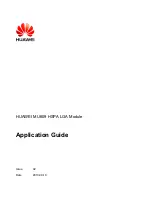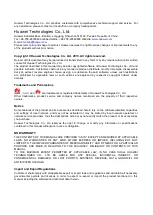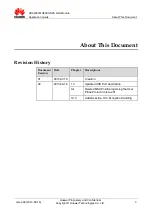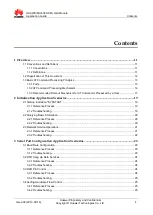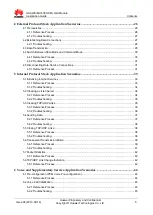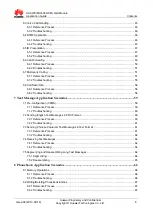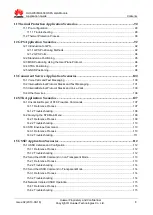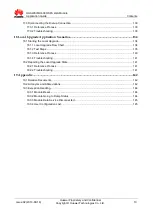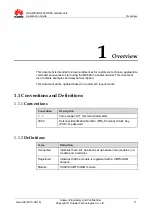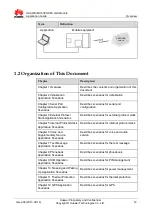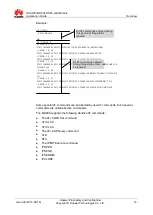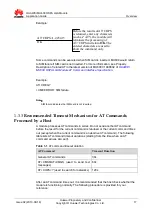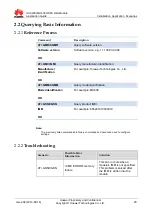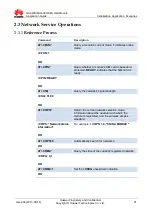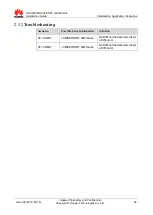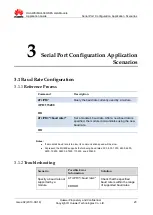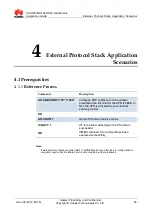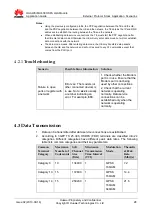
HUAWEI MU609 HSPA LGA Module
Application Guide
Overview
Issue 02 (2013-09-18)
Huawei Proprietary and Confidential
Copyright © Huawei Technologies Co., Ltd.
14
Figure 1-1
Port sequence on Linux
ECM port: simulated using USB, for establishing communication connection.
This is eth2 in Figure 1-1 .
MODEM port: simulated using USB, for AT command interaction and
establishing data connection. This is ttyUSB0 in Figure 1-1 .
DIAG port: simulated using USB, for DIAG (diagnostic) command interaction
(mainly used to debug modules at present). This is ttyUSB1 in Figure 1-1 .
PCUI port: simulated using USB, for AT command interaction only. This is
ttyUSB2 in Figure 1-1 .
GPS NMEA port: simulated using USB, sending unsolicited indications for NMEA
positioning data only. This is ttyUSB3 in Figure 1-1 .
GPS Control port: simulated using USB, for GPS AT command interaction only.
This is ttyUSB4 in Figure 1-1 .
Note:
The number of ethx and ttyUSBx may be different between different operation systems, yet the
port sequence is the same as shown in Figure 1-1 .
The MU609 also provides a physical serial port:
UART port: physical serial port, for AT command interaction and establishing data
connection.
A host controls a module using AT commands. If AT commands are unavailable, a
module can be deemed unavailable.
1.3.2
AT Command Processing Mechanism
A module processes AT commands from the ports (MODEM, PCUI, Control, and
UART) in series. An AT command can be processed when and only when the
previous AT command processing has been completed. If the module is processing
an AT command, most new AT commands from the same port will be ignored and
other commands from other ports will be buffered until the current AT command is
processed.
This rule also applies to COM ports converted from USB ports.

